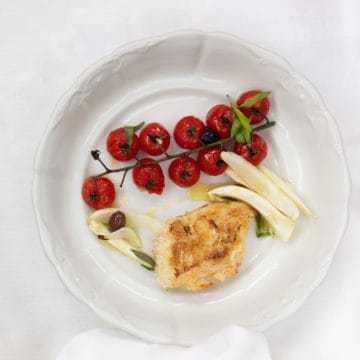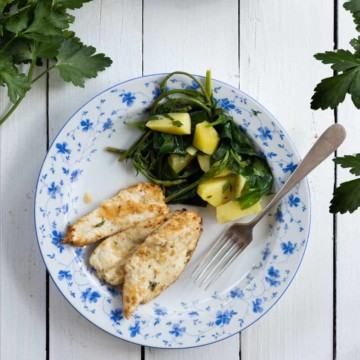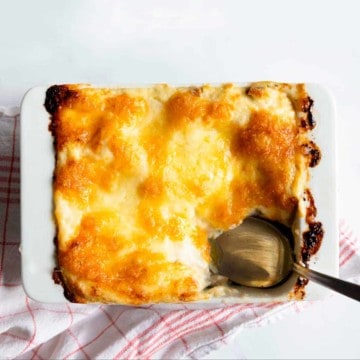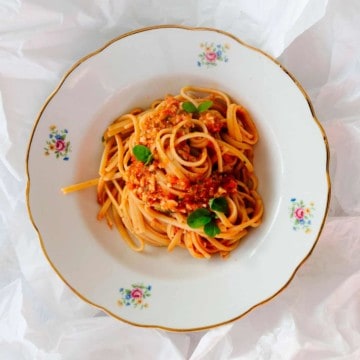
Around the world, there are many different New Year Eve’s customs, which are said to bring luck in the New Year. In Italy, we swear by lentils at the turn of the year, preferably with cotechino, a large pork sausage. And red underwear!
Lentils, money and luck
As early as the Roman Empire, people often gave each other a bag of lentils at the turn of the year. In this way, people wanted to wish their friends and family good luck and wealth in the New Year. For it was hoped that each of the lentils given would turn into coins. This custom was not only popular among the wealthy, but among the people as a whole. After all, lentils are very filling. And it was said that eating them would also bring good luck.
The symbolism of the colour red also goes back to ancient times. In Rome, red signified prosperity, power and passion. Soldiers wore red cloaks, senators red coats. The nobility and bourgeoisie also wore red fabrics for show – but as outer garments.

The siege sausage
Cotechino later joined the realms of lucky charms. The raw pork sausage was “invented” during the siege of the city of Mirandola in 1510/11. The League of Cambrai under Pope Julius II wanted to stop the expansion of the Republic of Venice with this conquest. But the city, with its massive walls, was difficult to capture. In order not to starve, the inhabitants slaughtered their pigs during the siege. To prevent the meat from spoiling, it was intensely seasoned and wrapped in rinds (cotechino) or stuffed into pigs' feet (zampone). Nevertheless, after a siege of 32 days, the Pope himself climbed the city walls. And the cotechino became a symbol: even in hard times, one would not starve.
📖 Recipe

Fried polenta with cotechino and lentils
Ingredients
For the polenta
- 300 g cornmeal
- 1 l water
- salz, for the water
- 1 tablespoon olive oil
For the lentils
- 300 g lentils, smaller types such as mountain lentils
- ½ l vegetable stock
- 1 stick celery
- 1 carrot
- 1 onion
- 2 tablespoon extra virgin olive oil
- salt
- pepper, freshly ground
- 2 leaves bay
- 1 sprig rosemary
Additionally
- 300 g Cotechino
Instructions
- Soak the lentils in cold water for a few hours.
Polenta
- Add the cornmeal to the appropriate amount of hot, salted water according to the instructions on the packet. Stir in 1 tablespoon of olive oil. As soon as the mixture starts to boil, stir the cornmeal constantly with a wooden spoon from the bottom to the top until the polenta is creamy and cooked. For the exact cooking time, please follow the package instructions. Coarse cornmeal needs 40-45 minutes cooking time, "minute polenta" only 8-10 minutes. Pour the polenta into a loaf pan/bread baking dish and allow to cool well so that it sets properly.
Lentils
- Drain the lentils and rinse with clear water. Clean the celery, carrot and onion, chop finely and fry in a pan with oil. As soon as the onions are golden brown, add the drained lentils, pepper, rosemary and bay leaves and pour in the heated stock. Let the lentils simmer for about 20 minutes or until they have the ideal consistency. They should not fall apart, but still be slightly firm to the bite. If necessary, add a little more stock/water. It is better to salt the lentils towards the end of the cooking time, as they will soften more quickly. Remove the herbs and put the lentils aside, covered.
Cotechino
- While the lentils are cooking, the cotechino should also be prepared. Put the raw sausage in plenty of cold water. As soon as it boils, reduce the heat and let the sausage simmer gently for about 20 minutes. Please also follow the package instructions here because of the cooking times!
- Now turn the polenta out of the mould and cut it into 1 cm thick slices. If you prefer fry the polenta in a metal pan with a little olive oil until hot on both sides. Remove the cotechino from the water, peel it out of its skin and cut it into slices as well. Serve the polenta slices with lentils and cotechino.
Nutrition
Buon appetito!






Leave a Reply